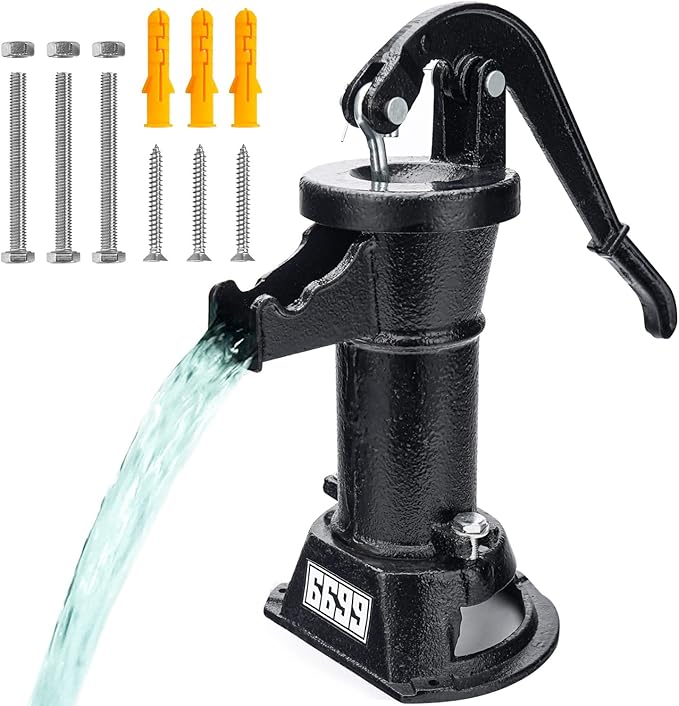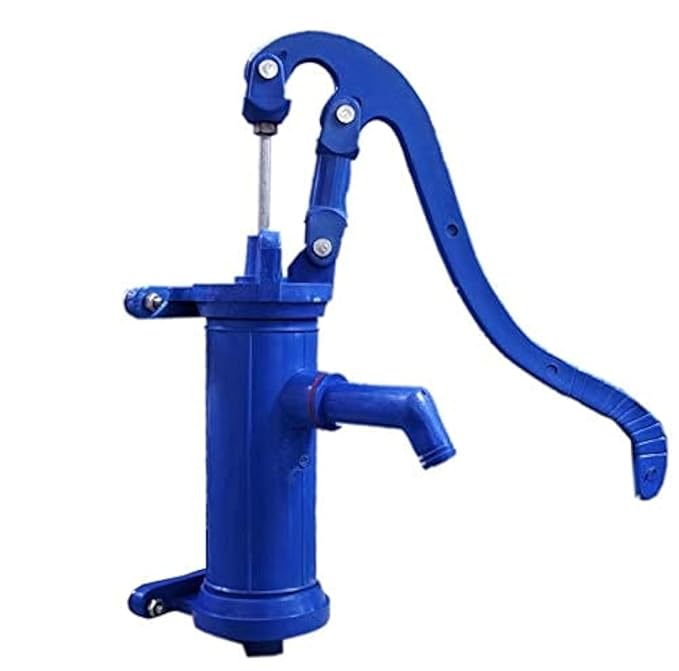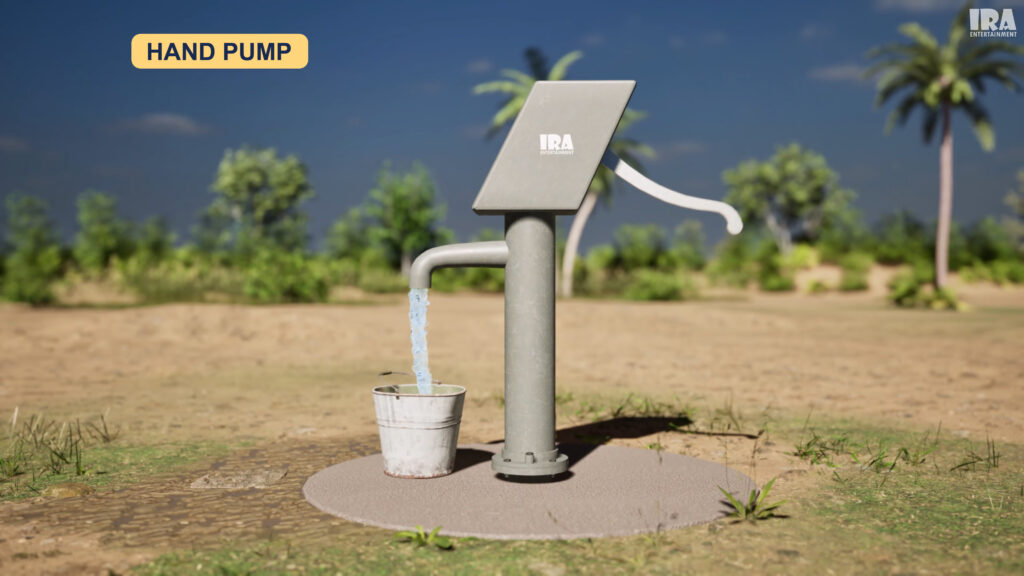
How does a Hand Pump Work?
Hand pumps have been a reliable source of water in rural areas and homes for generations. But have you ever wondered how these simple devices actually bring water from deep underground to the surface?
Let’s break it down in a simple way — backed by a visual 3D explanation!
The Invention of the Hand Pump

After the discovery of metal in the 1800s, the hand pump was invented. It became a revolutionary tool to access groundwater using human strength — no electricity needed.
These pumps became common across the world, especially in villages and homes with deep tube wells.
How a Hand Pump Works – Step-by-Step
Want to see it in action? Watch our 3D explanation video on YouTube for a visual breakdown of how hand pumps work:
Love to read?
Here’s a clear look at the parts and the working process:
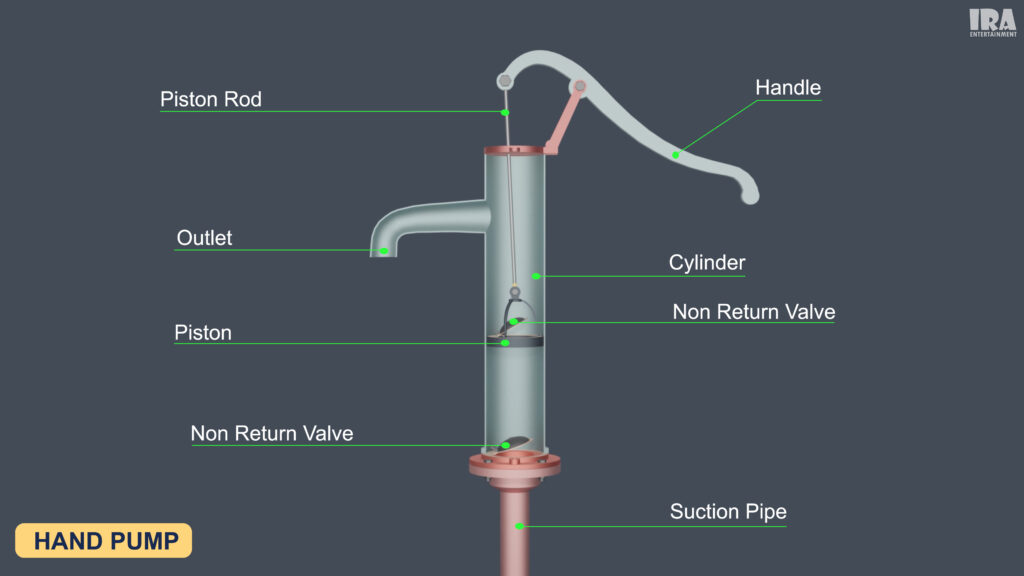
1. The Main Cylinder
This is the core of the pump. It houses the piston and controls the water flow.
2. The Handle
The handle is fixed to the top of the pump and connected to a piston rod. When you move the handle, it moves the piston inside the cylinder.
3. The Piston & Valves
The piston has a non-return valve that allows water to pass only in one direction.
Another foot valve is placed at the bottom of the cylinder.
These valves are crucial to trap water and push it upward.
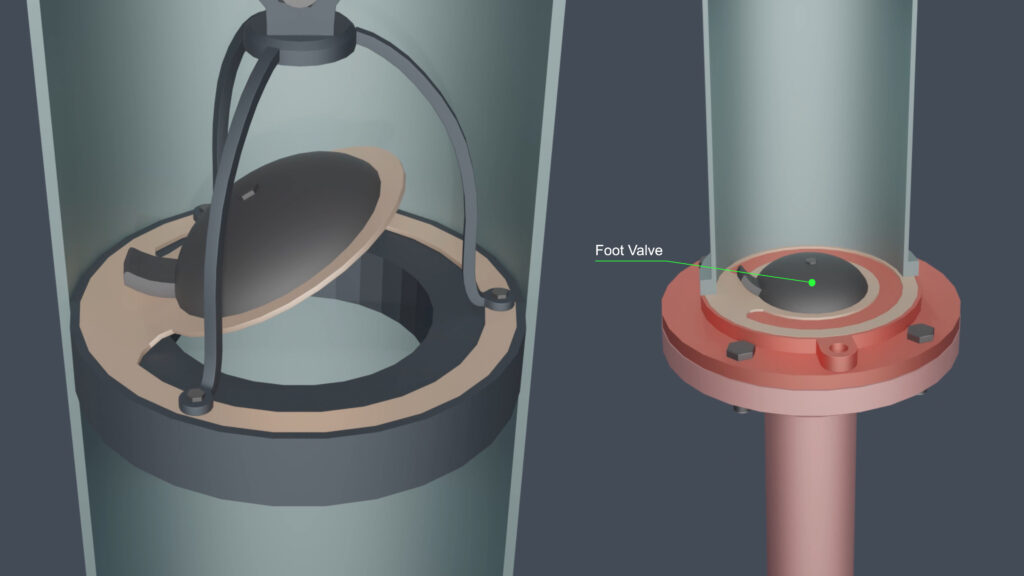
4. The Suction Pipe
A pipe is fixed below the cylinder and extended deep into the underground water source.
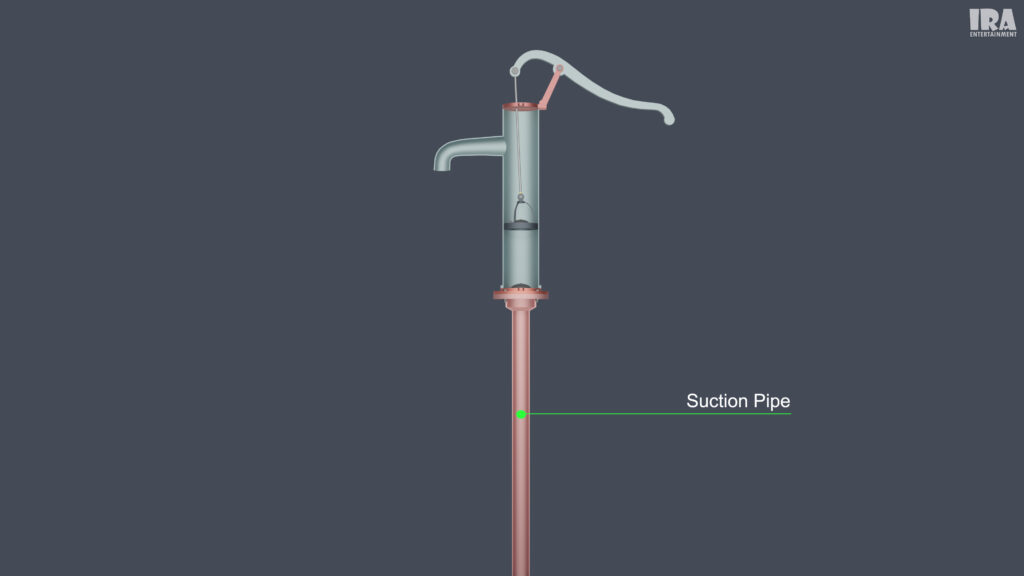
5. The Outlet
This is where the water finally comes out — ready to be collected.
The Working Cycle
Let’s understand how the hand pump lifts water with every movement:
When You Push the Handle Down:
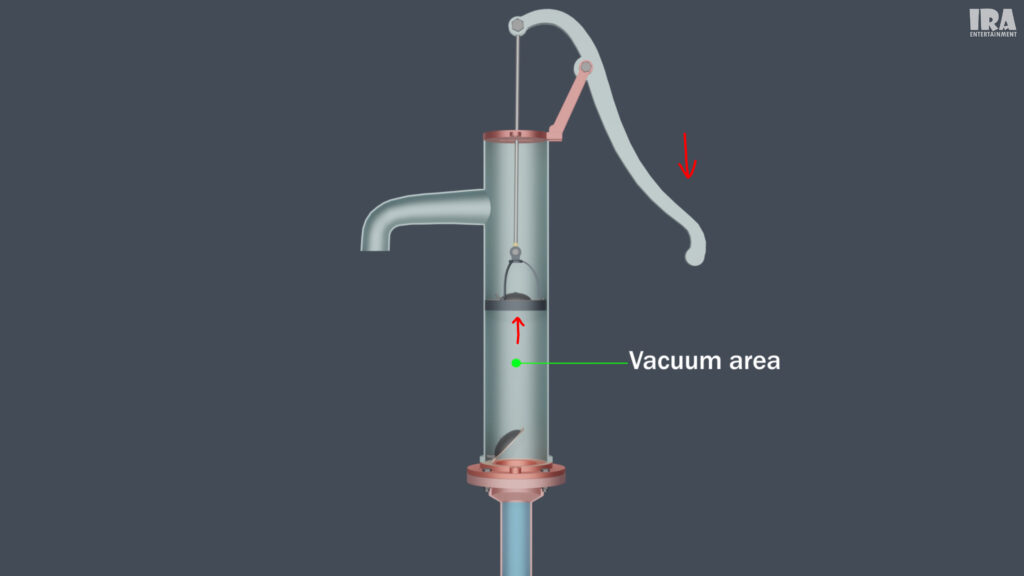
- The piston moves up inside the cylinder.
This creates a vacuum below the piston.
The piston valve closes, and the foot valve opens.
Water rises up to fill the empty space.
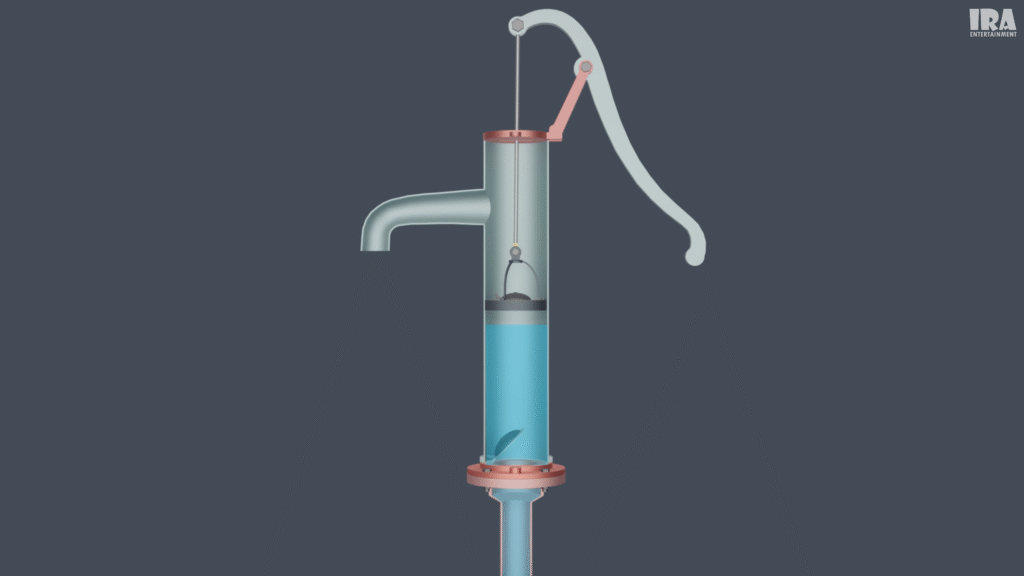
When You Pull the Handle Up:
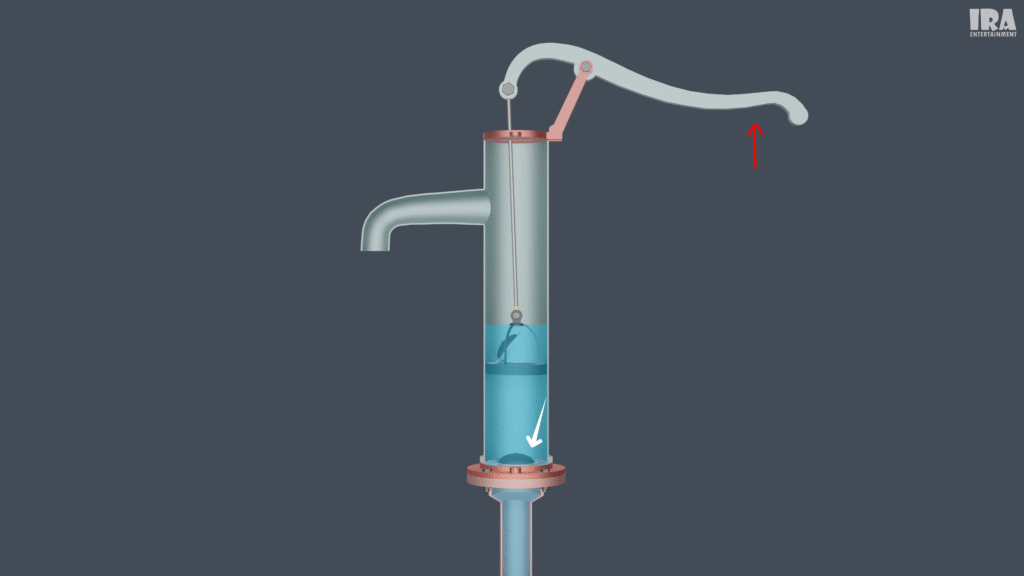
The piston moves down.
Now the piston valve opens, and the foot valve closes.
Water moves further up and stays trapped inside the cylinder.
Repeating the Cycle:
Each up-down motion pulls more water from below and pushes it higher until the cylinder fills up and water flows out through the outlet.
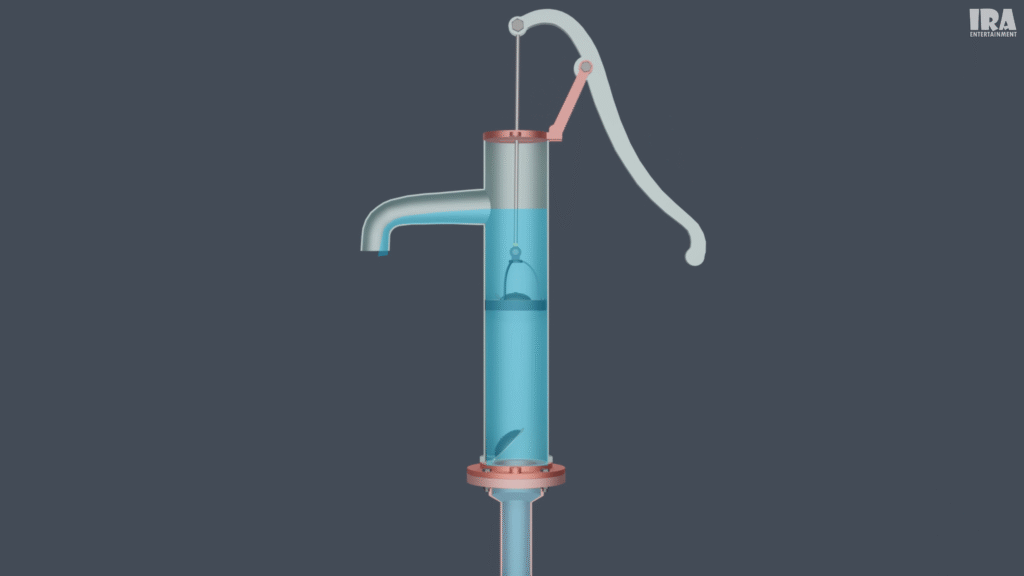
Why Is This Important?
Hand pumps are simple but powerful devices. They use no fuel, electricity, or batteries — just physics and human effort. Understanding how they work shows how cleverly designed they are to solve a basic yet vital need: access to clean water.
Related Amazon Products (Affiliate)
Cast Iron Pitcher Pump Antique Manual Hand Shake Suction Well Pump
Want to learn more through visual storytelling? Check out our detailed 3D explanation blog on Persian Wheel (Saqiyah): The Ancient Water Lifting Machine That Turned Deserts Into Farmland
Helpful Link – Hand Pump Wikipedia
